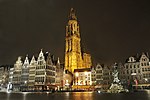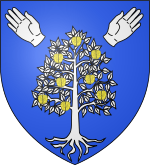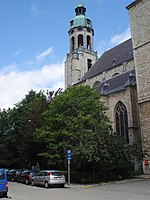ModeMuseum Antwerpen

MoMu (Mode Museum) is the fashion museum of the City of Antwerp, Belgium. Founded on 21 September 2002, the museum collects, conserves, studies and exhibits Belgian fashion. The museum is specifically focusing on Belgian contemporary fashion designers due to the arising of a group of Antwerp-trained fashion designers during the Eighties and Nineties (Martin Margiela, Dries Van Noten, Ann Demeulemeester, Walter Van Beirendonck, Dirk Van Saene, A.F. Vandevorst, etc.). The museum's first director was Linda Loppa who was also the founder and the director of the Fashion school of the Royal Academy of Fine Arts (Antwerp). The current director is Kaat Debo.The museum is known for its immersive scenography. Visitors are "immersed in the world of the designer or the theme", allowing for a unique experience with every exhibition.
Excerpt from the Wikipedia article ModeMuseum Antwerpen (License: CC BY-SA 3.0, Authors, Images).ModeMuseum Antwerpen
Nationalestraat, Antwerp
Geographical coordinates (GPS) Address Website Nearby Places Show on map
Geographical coordinates (GPS)
| Latitude | Longitude |
|---|---|
| N 51.217361111111 ° | E 4.3998611111111 ° |
Address
ModeNatie
Nationalestraat 28,28A
2000 Antwerp (Antwerp)
Antwerp, Belgium
Open on Google Maps











